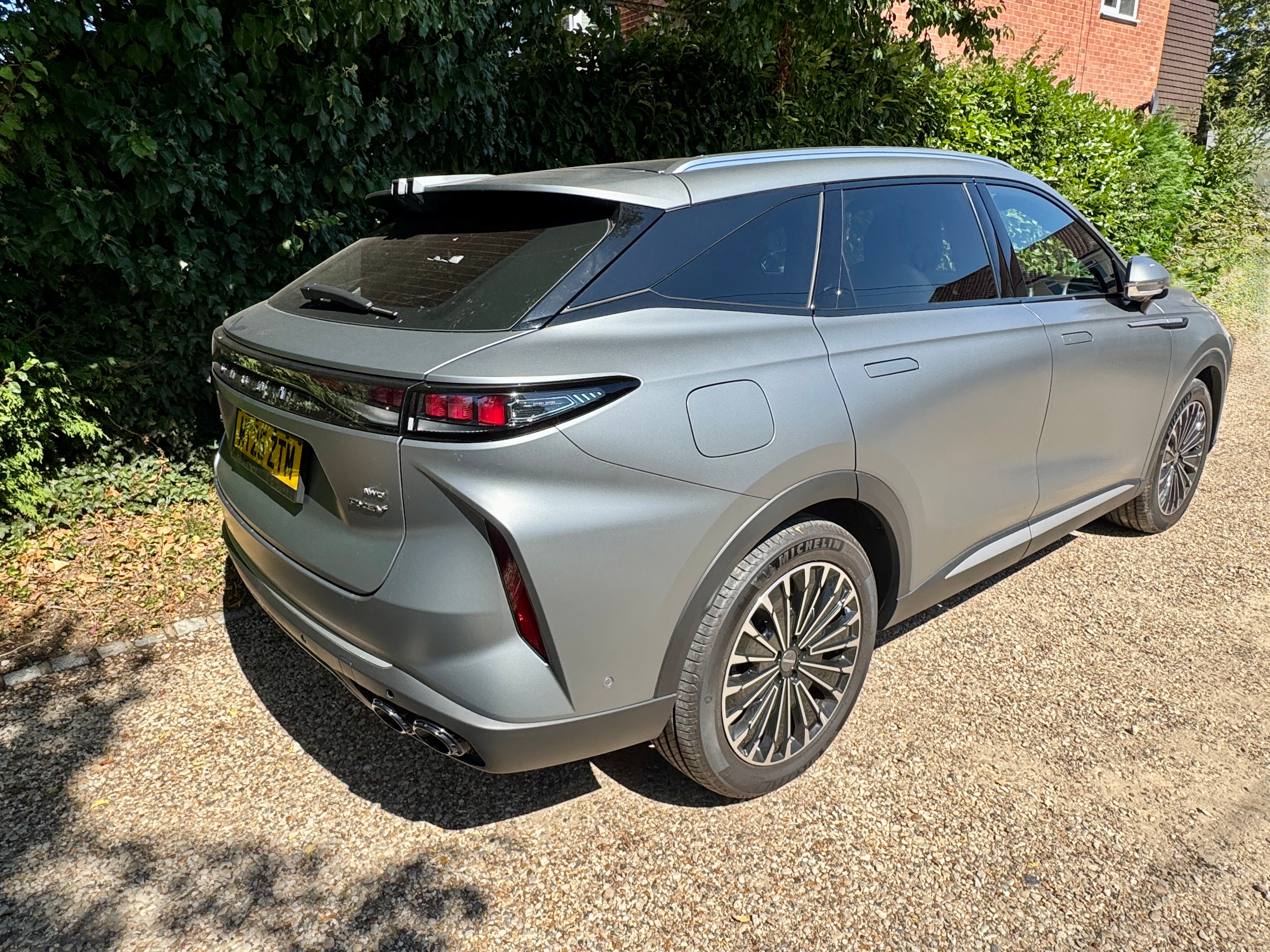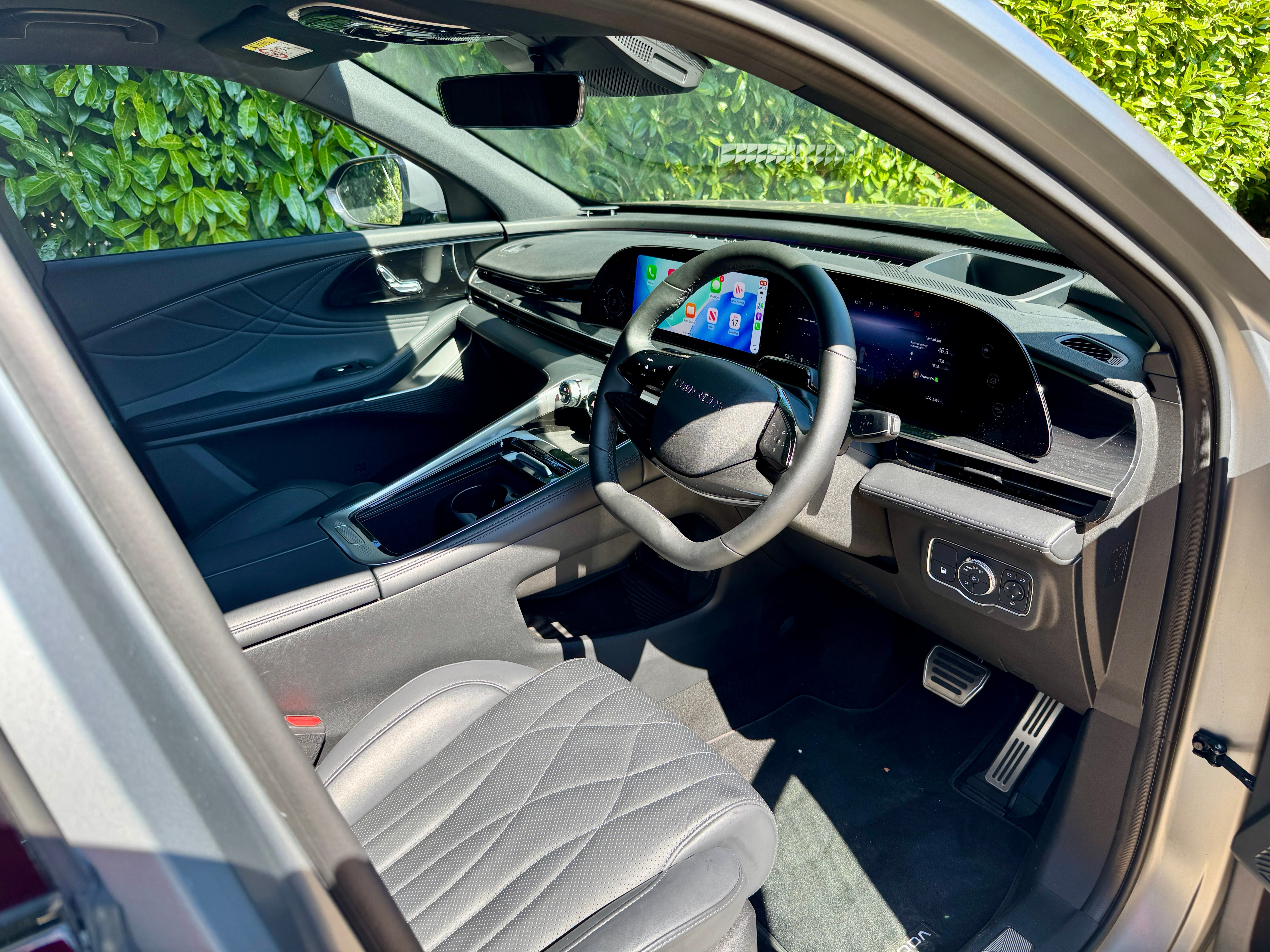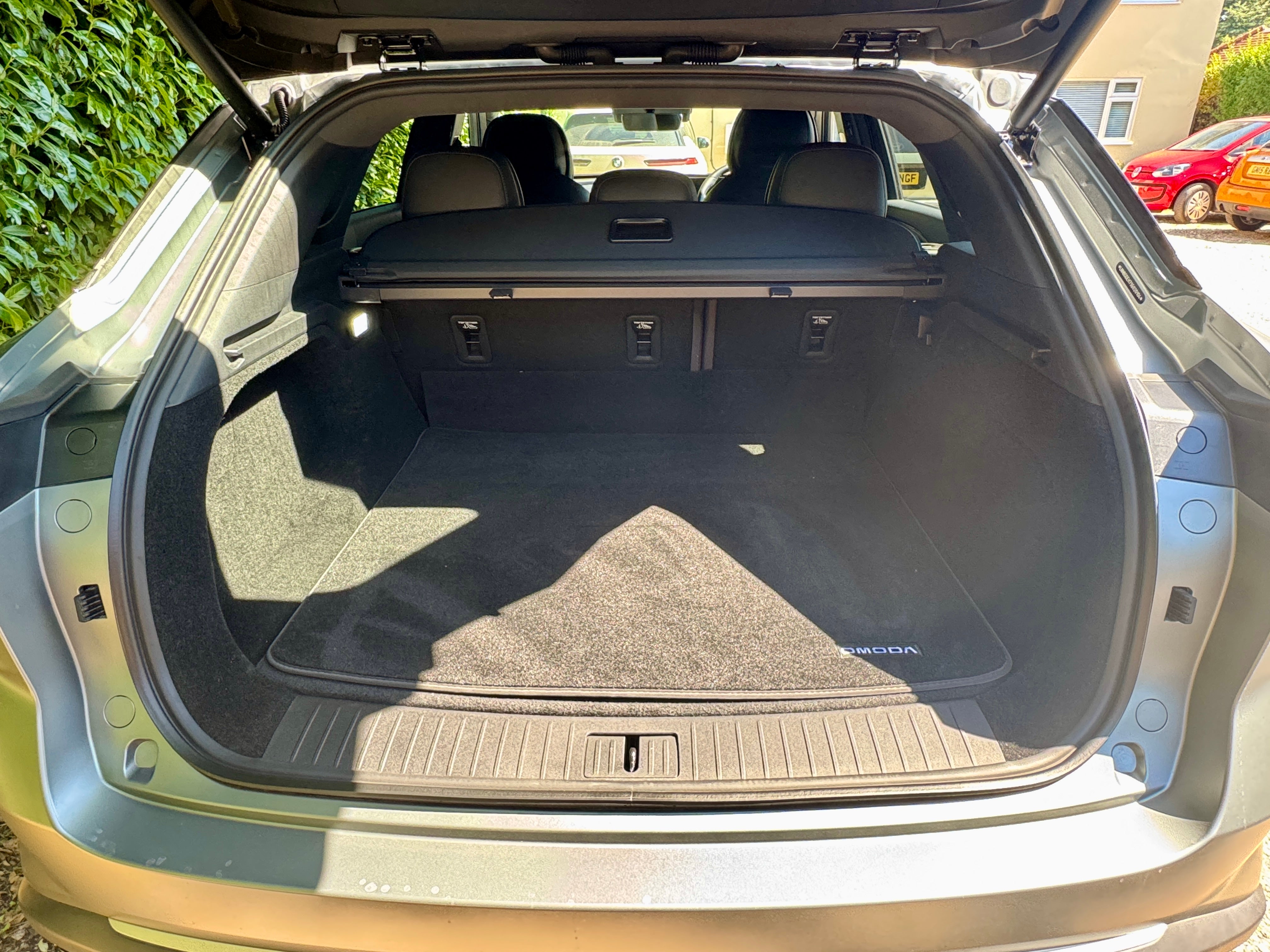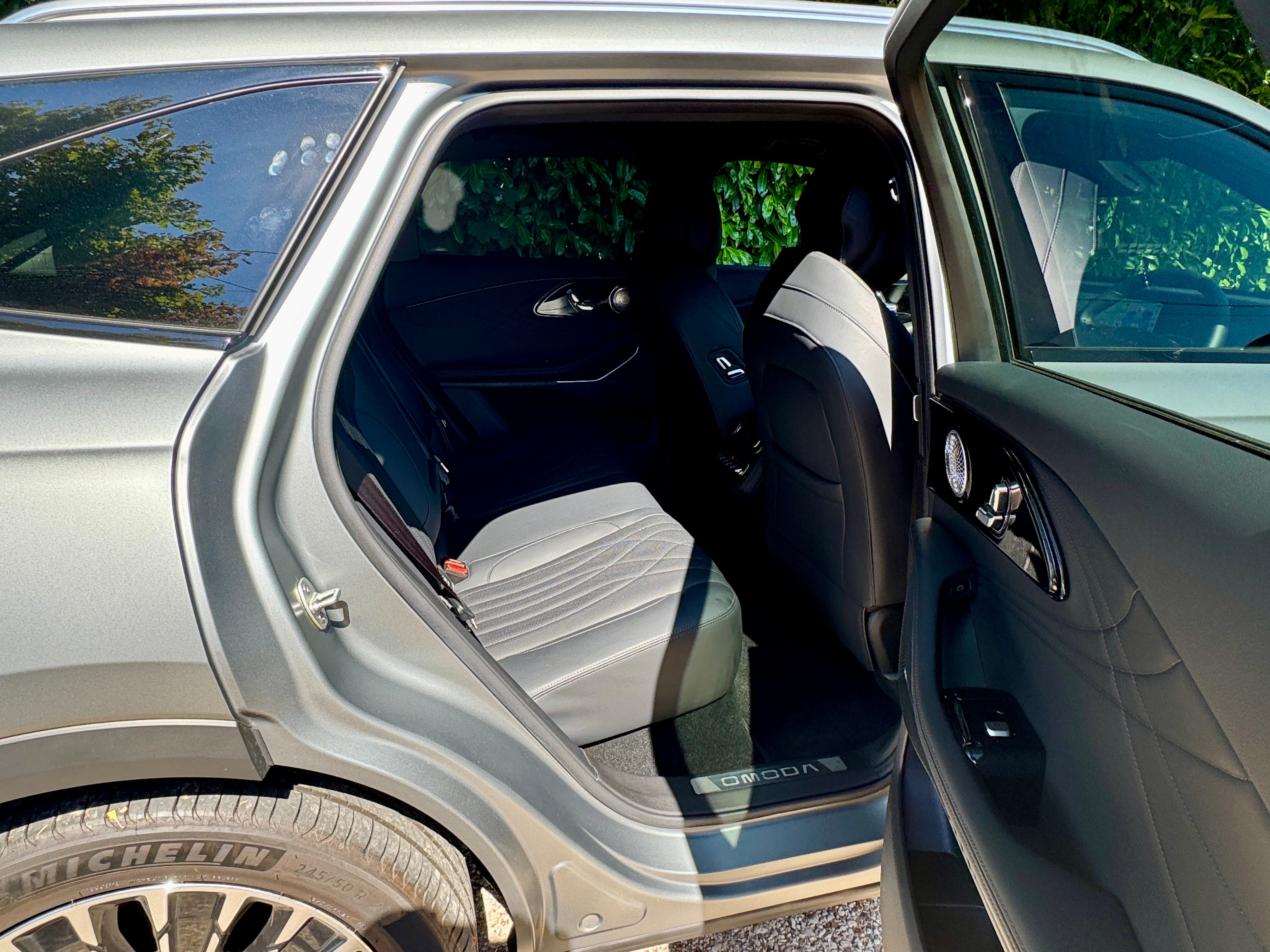
Omoda and its sister brand Jaecoo are going great guns in the UK, with buyers lapping up the combination of style, quality and value. However, the Omoda 9 goes into uncharted territory at well over £40,000 – even being hit by the government’s luxury car levy that will make it pricey on road fund license each year.
But, like other Omodas and Jaecoos, it looks very attractive in the showroom. It’s a sizeable, great-looking five seater with lots of space in the back and a decent-size boot. The kit count looks good, the quality is impressive, and the efficiency of the plug-in hybrid powertrain is really appealing. With all that taken into account, that price tag doesn’t seem too bad.
However, you should always take any car for a lengthy test drive, and my advice is to spend a good amount of time in an Omoda 9 before buying. Particular areas of concern start with the driving position and continue to the driving experience, especially the ride and the brakes. Then there’s the frustrating infotainment. It’s a shame, because for me these issues are a deal breaker. If Omoda got them sorted, this would be an incredibly appealing car.
How I tested
I spent a long weekend and many hours behind the wheel of an Omoda 9 covering the best part of 500 miles in one day trip, then using it for ferrying the family and drives around the local country lanes where I live.
Omoda 9: From £44,990, Omodaauto.co.uk

Independent rating: 6/10
- Pros Excellent efficiency, long EV range, strong on quality, loads of space
- Cons Poor ride quality, grabby brakes, infuriating infotainment, pricey
Omoda 9 specs
- Price £44,990
- Battery size 34kWh
- Maximum EV range 93 miles
- Engine 1.5-litre petrol
- Claimed battery & engine range over 700 miles
Battery, range, charging, performance and drive
The Chery group (which includes Chery models as well as Omodas and Jaecoos) calls its PHEV tech a Super Hybrid System, and it is pretty super! In the case of the Omoda 9 it combines an advanced 1.5 litre turbo petrol engine with a sizeable (for a plug-in hybrid) 34kWh battery.
The 9 is quite a large car and with an engine and fuel tank to carry around, too, the claimed maximum EV range of 93 miles is hugely impressive. Omoda doesn’t specify a maximum combined range, other than saying ‘over 700 miles’. In my driving, I had covered over 500 miles and the range predictor still said I had well over 100 miles to go – so not too far from those claims, which is especially good as my driving was mostly on the motorway.
The key to keeping costs down in any PHEV is to plug it in regularly. If you choose to do that when you’re out and about, the 9 will charge at speeds up to 80kW, giving a 30 to 80 per cent top up in 28 minutes – worth doing at a lunch or coffee stop.
The combination of both battery and engine gives a total power of 443bhp, while there’s a whopping 700NM of torque, which would be handy for towing. Not that it’s particularly relevant in a family SUV, but Omoda claims a 0-62mph time of 4.9 seconds, while the steering and grip levels are impressive.
On the move, the car is pretty silent whether you’re in petrol or electric mode, while any switching between the two is difficult to detect. In that respect, the 9 does a very good impression of a luxury car.

However, things fall apart a bit on the move with a ride quality that is constantly busy. It doesn’t take me long to get a feeling for a new car on the roads near where I live, and the 9 quickly disappointed me, fidgeting, bumping and jiggling over surfaces that wouldn’t have bothered me as much in some other models of the same size.
Then there’s the braking, which I never truly mastered. You have to put some effort into softer stops, keeping a good eye as far down the road as possible – a quicker tap of the brake pedal is likely to cause an abrupt reaction that’ll certainly wake any passengers enjoying a bit of a snooze thanks to the near silence inside the car.
Omoda is aware of shortcomings with its other models’ dynamics and is working to fix them. Let’s hope it takes the same approach with the Omoda 9.
Interior, practicality and boot space
I wouldn’t go as far as to say that the Omoda 9’s interior is a work of art, but it’s very attractive with a smart design and excellent quality. There are plenty of soft-touch materials where you’d want them and a nice blend of metallic and plastic surfaces that make the 9 feel really upmarket.
The standard panoramic sunroof opens, yet there’s still plenty of headroom whether you’re sitting in the front or the back, and there’s loads of knee space in the rear, too.
Although the front seats with their synthetic leather are comfortable with good adjustment – plus heating and cooling – the driving position is a little odd. You feel as though you’re sitting a bit too high with the top of the windscreen a bit too close to you. I was constantly checking to see if the seat would go down any lower.

The view rearwards isn’t especially open, either – the sloping roofline leaving a fairly shallow rear screen at the back, while the window line at the back rises making it a bit dark when you’re sitting in the back. It’s best to make sure the sunblind is open to let light in through the sunroof.
There’s good storage space inside the car with a nice big storage area hidden behind a sliding cover, plus storage by your elbows and decent door bins. And the boot at 660 litres is both big and a usable size with the seats able to fold down easily. Lift up the boot floor and there’s some extra storage space for cables, but a bit of a gap visible behind the back seats that Omoda’s quality team obviously missed – it doesn’t look great and is likely to hide dirt.
Technology, stereo and infotainment
So many Chinese models promise so much when it comes to tech but deliver so little. It’s the same with the Omoda 9, which gets an impressive kit list of luxury gizmos and driver assistance features, yet the usability is just plain poor.
The 12.3in central touchscreen flows into the digital driver display, all looking rather smart. There’s a standard head-up display, too, while separate heating and ventilation controls via smart circular knobs are a welcome touch.
For most of the time, you’ll probably be taking advantage of the wireless Apple CarPlay and Android Auto, but getting back to the Omoda’s systems isn’t easy. Then there’s the constant binging and bonging, admittedly dictated by legislation, but others use softer sounds. And when you head to the touchscreen to try and work out how to turn some of the warnings off, you get another alarm ringing annoyingly because, apparently, you’re taking your eyes off the road too much. If the systems were easier to use, this would be less problematic.

Then there’s the adaptive cruise control, which I like to use on longer motorway journeys. However, the lane keeping aid has you worryingly wandering around too much in lane, while the automatic braking – as with manual braking – is too much like an on/off switch for my liking.
The 14-speaker Sony stereo system is just about okay, while there are also normal, eco, sport, snow, sand and off-road driver modes, although most will – like me – just stick with the first of those options.
Geeks like me will like the animated lights that have a whiff of Knight Rider about them when you open and close the car, while there are also Audi-like scrolling indicator lights. The panoramic camera system is also worthy of note and I like the fact that the car starts as you get in and sit down, although it doesn’t turn off until you’re out and locked with the audio still playing away to itself until you’ve walked away.
Prices and running costs
With the starting price of £44,990, the Omoda is an expensive car that’s also going to get hit by the government’s expensive car supplement meaning additional road fund license costs. You’ll have to pay at least £750 for a colour other than white, too.
All that said, the efficiency is impressive with well over 600 miles from the fuel tank and battery both full and running costs super low if you regularly plug in at home on a smart energy tariff and take advantage of the hugely impressive 93-mile range.
There’s also peace-of-mind with a seven-year or 100,000 miles warranty should anything go wrong, with a dealer network that’s increasing in numbers all the time.
Omoda 9 rivals
- BYD Seal U DMi
- Kia Sorrento
- Volkswagen Tayron
FAQs
How long does it take to charge?
The Omoda 9’s 34kWh battery charges at speeds up to 80kW, giving a 30 to 80 per cent top up in 28 minutes.
How much does it cost - is it worth it?
It’ll go a long way and impresses with its quality and kit, but there’s no hiding the fact that the Omoda 9 is expensive starting at just under £45,000.
Does Omoda replace batteries for free?
There’s eight years or 100,000 mile cover for the hybrid battery pack, with a seven-year 100,000-mile warranty on the rest of the car.
Why trust us
Our team of motoring experts have decades of experience driving, reviewing and reporting on the latest EV cars, and our verdicts are reached with every kind of driver in mind. We thoroughly test drive every car we recommend, so you can be sure our verdicts are honest, unbiased and authentic.
The verdict: Omoda 9
The Omoda 9 really does have a split personality. What it does well, it does very well. But what it does badly? Well, you know where I’m going with that. It impresses for its quality, space, kit count and the efficiency from the plug-in hybrid powertrain. But I found the driving position a bit odd, the ride comfort was poor, some of the tech not especially intuitive and the brakes annoyingly difficult to get used to. And at £45,000 it’s pricey, too.
The 10 best Tesla alternatives 2025: Our favourite rivals to Elon Musk’s EVs
Best long-range electric cars 2025: Top 12 EVs that go the distance
Best small electric cars 2025: Top 11 affordable compact EVs to buy now
Best electric cars 2025: Top 10 EVs to buy and the ones to avoid
The petrol car that thinks it’s an EV
Citroen e-C3 review: Cheap family EV is perfect for British roads
Ford Explorer review: Stylish electric SUV is every inch a Ford
Think electric cars are expensive? My new EV costs me less than a couple of posh coffees a day







